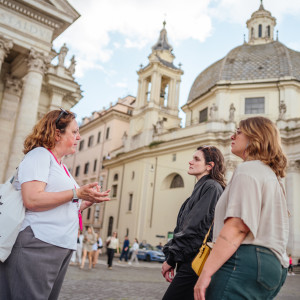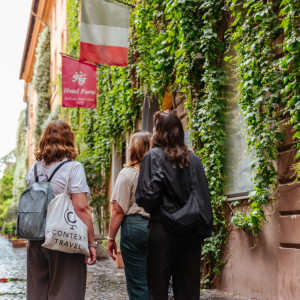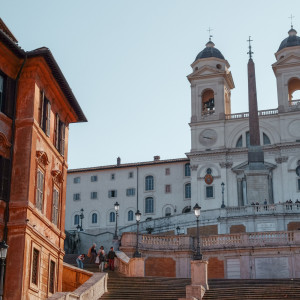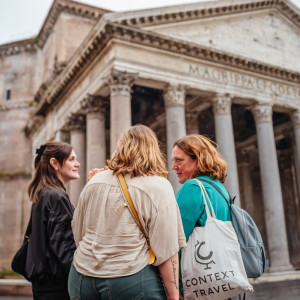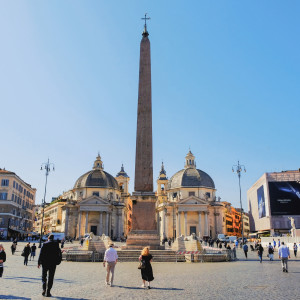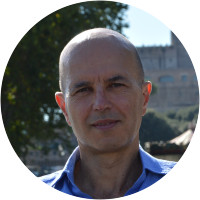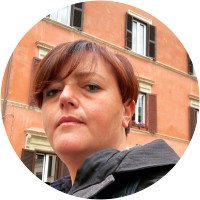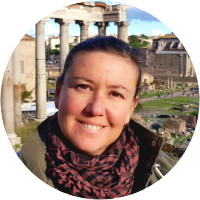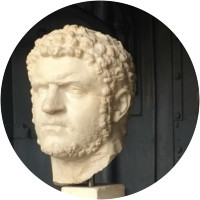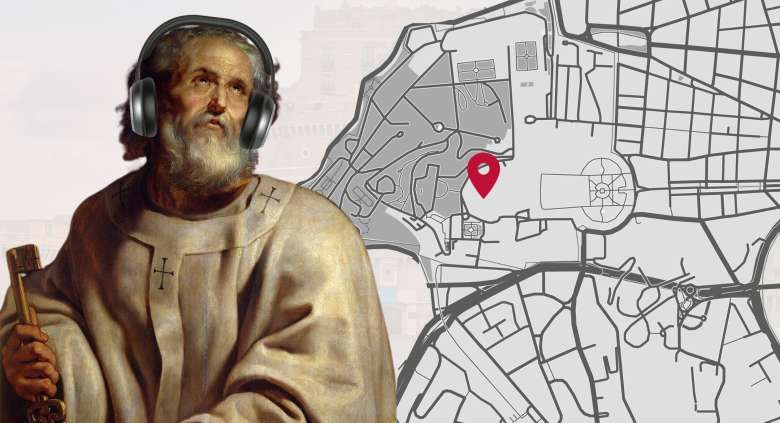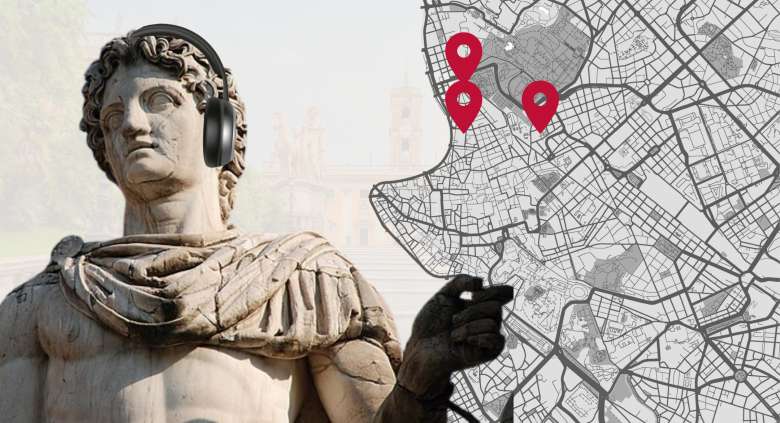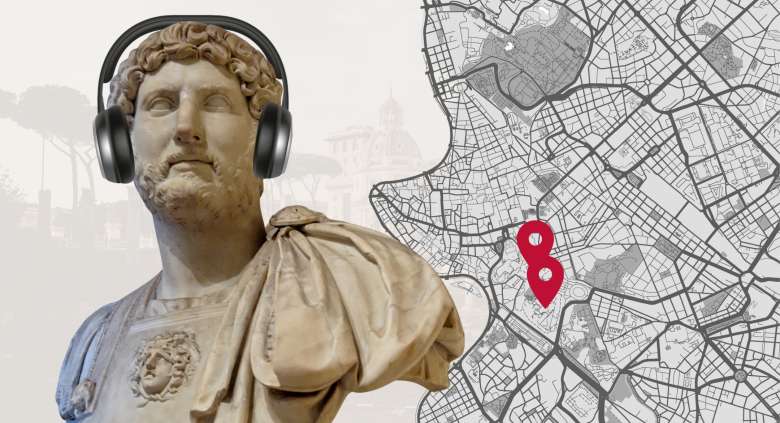Tour Details
Duration
3 hours
Product Type
Tour
Venues
- Pantheon
- Spanish Steps
- Trevi Fountain
- Piazza del Popolo
Select a date
Tour Description
Whether you are visiting Rome for the first time or greeting the city like an old friend, this three-hour Rome highlights tour offers a fresh perspective for anyone interested in uncovering the history, art, culture - and most of all, context - behind some of the city’s most popular destinations.
Experts
Traveler Testimonials
"A great way to spend our first day in Roma!!"
"Simona was an excellent guide! She was very knowledgeable, and kind!! It was a great way to spend our first day in Roma!! Not to mention the yummy, complimentary gelato."
-Meredith O.
-Meredith O.
"Brought Rome to life"
"This was perhaps the best tour we have taken. Liz is so knowledgeable and really brought Rome to life."
-Susan F.
-Susan F.
"A rare insiders look"
"Alessandra was absolutely incredible. THE best tour guide I’ve ever had. Loved the tour and felt like we got a rare insiders look at what Rome was like through the ages. "
-Steve D.
-Steve D.
Begin your Rome city tour at the Piazza del Popolo—the “People’s Square”—where the three main streets of Rome’s historic center meet, resulting in a bustling square teeming with life. From there, you can discover ancient tombs, towering obelisks, and charming churches in the historic Tridente neighborhood.
Climb the Spanish Steps while learning about the history of this Roman icon, from its origins to its present-day popularity. Next comes the Trevi Fountain, a masterpiece of water and sculpture. Don't forget to toss a coin for good luck!
End with the awe-inspiring Pantheon. This architectural marvel is a testament to Roman engineering. Enter to see the world’s largest concrete dome from within and learn about the site’s transformation from a pagan temple to a Catholic church.
All along the way, your expert guide will bring Rome's rich history to life, discussing everything from emperors and gladiators to quirky Italian traditions and the city's love affair with gelato. Your guide will be your personal Rome attaché, answering all your questions and offering insider tips to make the most of your stay.
- You want an introduction (or a refresher) on the city’s greatest attractions, led by a local historian.
- You already have your visit to the Vatican and Colosseum booked and are looking for an experience that focuses on non-ticketed—but equally important—historical sites.
- You’d like to go deeper than other tourists do, learning about tales of emperors, the history of quirky Italian traditions, and the stories behind iconic Rome postcard scenes.
For a highly curated, first-hand look at more of Rome’s most famous sites, we recommend our Vatican and St Peter's Tour and Ancient Rome: Colosseum, Roman Forum, and Palatine Hill Tour.
- Piazza del Popolo is an expansive and symmetrical square that acts as a grandiose gateway to the heart of Rome, flanked by churches and an ancient Egyptian obelisk.
- Palazzo Borghese's exterior presents an imposing example of Roman architecture, with its grand facade hinting at the opulent art and history that resides within its walls.
- The Spanish Steps, a monumental stairway of 135 steps, elegantly cascade down to the Piazza di Spagna, offering a favorite meeting place and a picturesque backdrop for countless artists and travelers.
- The Trevi Fountain, an iconic masterpiece of baroque art, springs to life with its dramatic sculptures and the legend that tossing a coin into its waters ensures a return to Rome.
- The Pantheon, with its harmonious interior and striking exterior, boasts the largest unreinforced concrete dome in history, standing as a testament to the architectural genius of ancient Rome.
Tickets
All venues are non-ticketed. Context will handle your reservation to enter the Pantheon. There is no additional cost outside of tour pricing for this.
Additional Trip-Planning Resources
A few things that pair well with this tour:
- A coin to toss into the Trevi Fountain
- Comfortable walking shoes
- A deeper dive into the food scene in Rome with a Rome Food Tour
For more information about Context Tours, please visit our FAQs.
Where does the tour meet? Where does it end?
You will meet in the Piazza del Popolo and end at the Pantheon. Your confirmation email will have the exact meeting point details along with a map. If lines are very long at the Pantheon, your expert will ensure you are briefed and have tickets to explore on your own after the tour.
When should I take this tour?
This is the ideal tour to take on your first day in the city. In addition to seeing and learning about some of Rome’s most famous sites, you’ll also become familiar with the city’s different neighborhoods and local life and culture. Don’t hesitate to ask your expert guide for recommendations for the rest of your time in Rome!
What is the dress code inside the Pantheon?
The Pantheon is considered a holy place. Men should wear long shorts or slacks, and women should wear long shorts, slacks or skirts below the knee. Shoulders must also be covered; plan to bring a shawl to wear if your top has them exposed. Shorts above the knee are discouraged for adults and teens.
Is this tour kid-friendly?
It can be, yes! While we do have other tours in Rome that are designed especially with children in mind, if you book a private tour, we can assign you a family-friendly expert guide who will make it especially interesting for young minds.
Is this tour wheelchair accessible?
Our guides have experience in giving tours to guests of all abilities; however, navigating the streets of Rome's city center can be quite challenging for wheelchair users because, unfortunately, the cobblestone streets were not designed to be wheelchair friendly.
Do you reserve headsets for this tour?
Do you reserve headsets for this tour?
Depending on your group size, we may be required by the venue to order headsets, in which case you’ll see a “Headset Fee” added to your order.
We understand that some of our valued guests may have mobility concerns, and we want to ensure you have a comfortable and enjoyable experience throughout your tour. If there are any accessibility concerns that your tour guide will need to be aware of, please let our team know at the time of booking.
Is this tour wheelchair-friendly?
Our guides have experience in giving tours to guests of all abilities; however, navigating the streets of Rome's city center can be quite challenging for wheelchair users because, unfortunately, the cobblestone streets were not designed to be wheelchair friendly.
Please note that the Pantheon is wheelchair accessible.
Book with confidence — see Context's flexible cancellation policy here.
Where You'll Start
–
466 Reviews
Reviews can only be left by Context customers after they have completed a tour. For more information about our reviews, please see our FAQ.
Fascinating and educational tour!! Sandro is a wealth of knowledge and we so enjoyed our tour.
Kathy
Reviewed on:
Dec 8, 2025
Our guide was fantastic, Sandro shared his extensive knowledge about all things Roman with us, we learnt a lot during our time together!
Caroline
Reviewed on:
Dec 8, 2025
Despite the rainy weather during the Sites and Insights tour, our guide Giulia made the experience absolutely fantastic. She kept the energy high, set a perfect pace, and shared an impressive amount of knowledge in a way that was both engaging and entertaining. Giulia’s enthusiasm truly turned a rainy day into a memorable adventure.
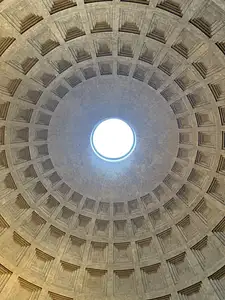
Victoria
Reviewed on:
Nov 29, 2025
